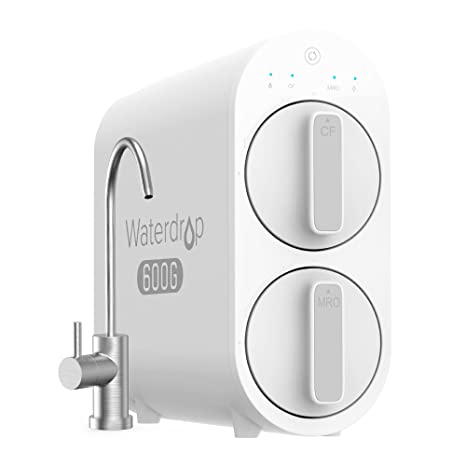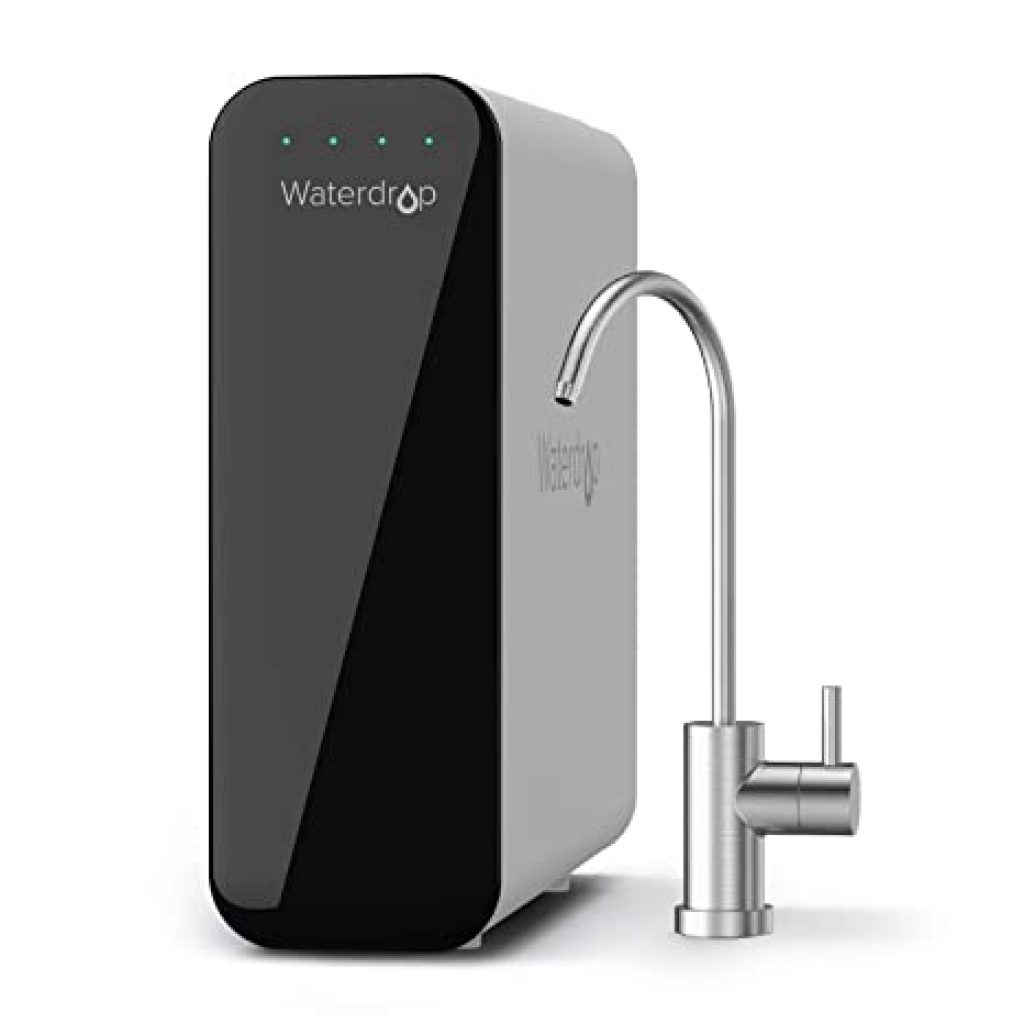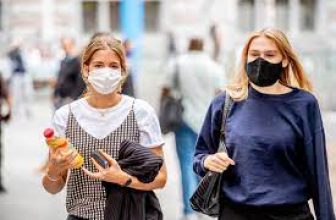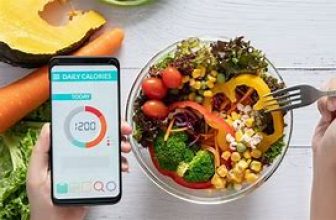
When I moved to my new home, I had an issue with the quality of water I was getting. The water looked pretty clean and was treated, but it didn’t taste ‘pure,’ and I felt the quality was not good for my household.
Being someone who drinks lots of water, I had to look for options to improve the quality of the water. One of my neighbors recommended I try a Waterdrop filter, which I did.
However, before I settled on the one I use now, I had to try several filters to find one that satisfied my needs entirely. Here are more details.
Waterdrop is a company that has been providing trustworthy water purification solutions since 2015. The company aims to turn global and local trends into meaningful innovations.
It is particularly notable for its involvement in the Flint water crisis. Additionally, the company is focused on making positive impacts in places with water scarcity.
Waterdrop believes in excellence and sustainability as they handle their processes. Therefore, the materials used for manufacturing must meet high industry standards.
The company designs hundreds of products. Its main selling products are water filter pitchers, reverse osmosis water filtration systems, refrigerator water filters, under sink water purification systems, and faucet water filters.
These products have been tested and passed certifications like NSF, FCC, UL, UPC, WQA, and CSA.
With the National Sanitation Foundation (NSF) certification, Waterdrop makes known the contaminants their water filters remove as per the raw material, and NSF verifies the same.
The Federal Communications Commission (FCC) certification is obtained to approve Waterdrop’s filters that have radio technologies.
Underwriter Laboratories (UL) certification certifies Waterdrop’s filters to make them safe for consumers and workers by testing Waterdrop’s industrial standards, processes, and facilities.
Uniform Plumbing Code(UPC) certification is designed for the provision of safe and sanitary plumbing systems. It governs the installation and inspection of Waterdrop’s plumbing systems.
Water Quality Association (WQA) certification verifies that Waterdrop filters are safe for end-users to hold up under regular use and confirms they are made using reproducible processes.
Canadian Standards Association (CSA) means that Waterdrop’s filters are tested and are applicable as per North American Standards. Electrical filters typically have CSA marks.
Waterdrop is not the only company involved in providing water solutions. However, I think they differentiate themselves with more sleek designs.
Comparing Waterdrop’s products against their competitors, I would say that Waterdrop has put more work on reverse osmosis under sink systems. They are exceptional with excellent designs, filtration capability, and substantial water capacity.
With that said, you can still check out other water filtration companies like Pelican, Clearly Filtered, Aquasana, Springwell, and Aquaox. These companies are ideal if you want softeners and whole-home filters. Clearly Filtered offers excellent water filter pitchers.
I use this filtering system. It is convenient, has a sleek design, and is NSF tested to remove viruses, lead, cysts, etc. This system quickly gives me adequate clean and quality drinking water.
I like that this system comes with a lead-free faucet that I use at my sink. It ensures my water passes through a safe passage without recontamination risk as it goes from the RO unit.
Water goes through three filtering stages during filtration, including reverse osmosis, to eliminate up to 99% of harmful contaminants.
The system also comes with a pressure pump that measures incoming water’s pressure to adjust the system to function at the best filtration speed possible.
The WD-G3-W has a built-in leak protection device that automatically turns off the system and power if a leak is detected.
This system is compact and fits under my sink without taking too much space since it doesn’t have a storage tank. I found installation relatively easy.
The system only works on electricity supply, and after installation, you must flush it for half an hour before you can get safe water.
Pros
- NSF certified
- Less water wastage compared to other RO systems with a 1:1 water to waste ratio
- Most water contaminants are removed
- Good compact design
Cons
- The system is pricier compared to some in the market
- The system’s tankless design can have you wait for clean water longer than with other systems
- The remineralization filter may not get your water back to the alkalinity you would like

This is the standard under sink water filter by Waterdrop. It doesn’t have reverse osmosis technology, and filtration undergoes three stages.
Water goes through the PP filter during the initial filtration stage for sediment and large contaminants removal.
It then passes through the UF filter (the ultrafiltration membrane), where more contaminants, bacteria, and microorganisms are removed. Anything bigger than 0.01-micrometer is also removed.
Finally, water passes through the CT filter for flavor and taste enhancement. At this point, healthy alkaline minerals are reintroduced into the water.
You connect the system to your sink’s faucet. It fits perfectly under your sink, only using minimal space, and the installation is pretty straightforward. The filters in this system can last for two years.
The design of this system is simple, and filter replacement is easy. You won’t even have to shut down the main supply to replace the filter.
If you live in a small space or want a filter for your RV, this system is perfect since everything is fitted in a single housing unit. It doesn’t have many connections to take care of.
Pros
- A long lifespan
- Because it doesn’t use RO purification, the cost is relatively low, and the system doesn’t produce wastewater during filtration
- Easy installation and maintenance
- The system saves space since it’s compact
Cons
- It is not as thorough compared to a system with RO purification
- Some users have noticed a dip in the flow rate

This product’s filter uses a gravity water style such that water is gradually filtered with no electricity or pressure to fasten the process. The system takes about one minute to yield ten cups of clean water. This is pretty fast compared to other filter pitchers I have come across.
If you choose to use this system, you need to replace the filters every three months. This is also a reasonably average replacement time. Replacement is still manageable since you don’t have to give large chunks of money. If you are a small-budget household, you can use this system.
The system uses seven filtration steps to remove contaminants like the taste and odor of chlorine, lead, aluminium, mercury, sediment, limescale, and arsenic.
It has an activated carbon filtration with an increased surface area for enhanced adsorption and performance. In addition, the media contains lots of silver which prevents the accumulation of algae and different microorganisms.
If you want to refill your pitcher with more water, you don’t have to remove the cover. Instead, you just have to untwist the refill cap and add water.
This filter system is NSF certified for lead-free construction and chlorine reduction. It is also made from BPA-free material.
The gravity induction indicator alerts you if new system filters are needed.
Pros
- It’s Portable
- Quick filtration for ten cups
- NSF certified
Cons
- You have to buy replacement filters regularly
- The water filters are less effective compared to other systems
- Filtration is not as thorough as with other systems

This water filter will remove impurities in your water and replace them by adding useful ones like calcium and magnesium. Some of the removed contaminants include chlorine and sediment, but the system is also handy for colloids elimination.
What you will enjoy about this product is the quantity of water it gives before wearing out. The amount is about 8,000 gallons. If you compare this amount with that of other similar systems, you will see that it is about ten times more.
Most filters usually wear out in about half a year, but this system’s filters can go for about a year.
To use this system, you only need to connect it to your kitchen faucet. It connects seamlessly and is designed to be compatible with standard kitchen tap faucet sizes.
You won’t have to worry about this system spoiling your water since it has food-grade stainless steel core material.
The system filters your water with five stages to give you clean water with no odor or bad taste. Another impressive thing is that it comes with an easy-to-use switch that allows you to switch between pure water and unfiltered water.
Pros
- Water impurities are replaced with useful ones
- The system will give you a lot of water before it wears out
- The system’s switch gives you the specific water you need on demand
- It works with standard kitchen faucets
Cons
- You may find the installation taking time
- You may have to check the filter’s remaining potency manually

This system filters around 600 water gallons in a day, and it doesn’t come with a tank; therefore, filtration occurs in real-time. If you turn on the tap, filtration happens.
Because water is not stored, you will appreciate the lack of bacteria and pathogens accumulation. Again, the tankless nature of this system means that it doesn’t occupy too much of your space.
When water is filtered, it gets out through a faucet. Waterdrop says that this faucet is lead-free and is made from brushed nickel.
The system uses RO purification, allowing it to remove most contaminants and unwanted materials from your water. It also has a large filter area to allow substantial filtration power.
That way, the 600GPD Reverse Osmosis Filter System filters more water at a faster speed and more thoroughly.
Additional to the large filter area, the system is designed on the basis of five filters in one design. This makes your system more powerful.
One of the best parts of this system is viewing the TDS levels and the remnant filter life. You can see all these details on the system’s screen, which you can find near the output faucet.
Pros
- Minimal water wastage
- The system uses reverse osmosis, but it is still not very noisy
- The system’s water flow rate is decent
- It is compact as it is tankless
Cons
- Installing the system may require you to drill a hole in some cases
- If you want this system, you have to pay more than others
What Features to Look into in a Water Filter?
My most important consideration is the contaminants removable by the filter. You can find some water filters that can only get rid of physical impurities like rust, sediments, or tiny objects. Other filters can remove chemical contaminants like heavy metals, fluorine, lead, and chlorine. You can also find water filters that remove unpleasant tastes or odors from water. I recommend that you pick a filter based on what you feel is essential to you.
You must be aware of what your water supply’s impurities are. That can always help you decide if impurities are your priority. I can only go for a filter I know will significantly remove impurities.
Water filters work with a filtration process that you need to understand. Otherwise, it will be pointless getting one. For example, you need to familiarize yourself with the filter media and the stages that take place before filtration.
Some water filters use electricity for filtration, while others filter the water after manual pumping.
The potential life of any water filter I get is a crucial factor. I don’t want to get one and have to dispose it within no time.
You can get water filters that can last for at least six months, and some can go for even three years. So I highly recommend that you go for a filter that can serve you for a significant time.
Even as you consider the filter’s life, you should factor in how much water it can purify before losing its potency. Usually, you will see this quantity indicated in gallons.
You also need to choose a water filter that will work well with your water supply-well, river, lake, etc. Unfortunately, not every filter out there works with every water supply; therefore, always remember to ask.
The ease of a filter’s installation is not usually a significant concern for me. For one, I find waterdrop filters are pretty easy to install. If the installation requires an expert, I have a plumber in my house.
Determining how easy installation will be, contingent on factors like installation costs or even your preferences is always essential.
The size of the water filter and its compactness may need consideration depending on where you want it.
Some filters have BPA or lead, while others don’t. If you feel this is a crucial factor, choose wisely.
I usually don’t get water filters that have not been tested. I will go for a filter that has undergone an independent NSF test and not one that hasn’t.
Installation and Maintenance Tips
Your water filter type determines how you install it. For example, you won’t install a fridge filter like a countertop filter. However, I have observed that most waterdrop filters are installed on a push-to-connect principle.
Before installation, you must determine where the mounting will be or prepare the mount yourself for a first-time installation. The next thing will usually be to push your filter into the mounting. You then proceed by twisting the filter for it to lock in its place as it should. Completing the connection requires you to get the water supply faucet to get into the filter at the point it should.
Assuming you are using a reverse osmosis filter, you need to link it to a power source. That is how the filtration process takes place. If you are installing a countertop or under-sink filter, you will need to drill a hole for the faucet to pass through.
Most filters usually have a manual for installation, and you can follow through with the aid of the diagrams.
Once you are done with the installation, you need to turn on the supply line. Ultimately, the water should flow into the filter, and filtration should begin. Once the process is complete, water comes out from the other end.
If you did everything right, you should notice the water coming out to be different from the water that went in. Usually, it is clearer without odor or unpleasant taste.
I have kept two things in mind when maintaining the water filters I have bought. For one, I have had to clean the filter media regularly. This is the gauze-like material that primarily traps water impurities.
A clean filter media excellently maintains its power and works effectively. Therefore, I always follow the cleaning instructions provided.
The other thing I swear by is changing the filters when they lose their potency. You can get a filter system that shows how much filter potency is remaining.
Suppose your filter doesn’t have such a screen. Then, you will usually see the filter working differently- the water that comes out does not appear as clearer, odorless, or taste better as usual.
Frequently Asked Questions
The filters are manufactured at the company’s source in China but designed in the USA.
Yes. Waterdrop filters are designed to remove most water contaminants, including lead.
The bacteria are not killed per se, but it is removed from your water. The filters that use reverse osmosis are even more effective in eliminating bacteria. However, most filters attached to faucets are not designed to remove bacteria that may grow in the filter itself.
I trust you now have extensive guidance about Waterdrop filters , and you can easily decide and try one that meets your needs based on my Waterdrop filter review.








